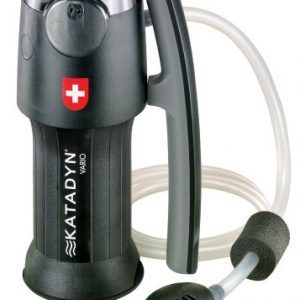
Water is the stuff of life. You can go days and even weeks without food but a few days without water can kill you as easily as an infection or wound can, often quicker. This is why storing water for emergencies is so important. There’s quite a few ways to keep water but the big questions are how much water to save and what’s the best way to keep it safe?
Use the tips below to get up to speed with emergency water storage and start being better prepared now.
SEE ALSO: All About EMPs Part 1 – What is an EMP?
1. Containers Matter
First off, there are two main ways to store water. The first method is to purchase it pre-packaged in traditional water bottles or larger gallon bottles. This is great because it’s simple and not overly expensive.

Method number two uses your tap water and is much cheaper and just as effective. It’s worth noting that you can only do this method if you have public tap water. You can use well water for storing, but it’s strongly recommended that you filter and sanitize it first.
Containers like used plastic pop bottles are a great option, but plastic milk and juice containers are not. Check out this post for the details on how to store water in used plastic bottles.
Other than that method, you can purchase plastic containers built specifically for water storage, just follow their directions on use. Don’t use glass to store water, as while it’s great at being sanitized they’re heavy and too easy to break.

2. How Much?
Now that you know what to put your water in, the big question is how much to keep? The minimum water necessary to keep a healthy adult going is one gallon per day. This is enough to keep properly hydrated in normal conditions.
Add into this illness, very young or old age and that number is increased. Extreme climates will also increase this number, as will heavy activity. Judge for yourself how much more than the recommended one gallon is right for you.
3. Store Water in a Proper Location
Whatever containers you choose to keep your water in, you should store it in a cool, dark, dry place. This will make sure the plastic doesn’t break down in sunlight and that temperature extremes don’t damage the container or open it up to infection by outside sources.
Ideally you should keep water in your basement on shelves off the floor. By doing that you will keep your water safe and ready for when an emergency comes up.
SEE ALSO: Sustainable Camping Gear
4. Water Expires
While it’s funny to think that water can expire, it’s true. Water purchased in sealed containers is good for anywhere from 6-12 months. After that it should really be disposed of. While purse H2O will never go bad, it’s impossible to package it in a way that no bacteria or other invisible agent, too. This means the expiration date is basically set for when the acceptable level of bacteria in the water can grow to an unsafe level.
If you bottled your own tap water you can always use the steps in the post above to re-sanitize it, making it less wasteful. If you did store your own tap water, you want to stick to the 6-month rule pretty strictly.
5. Don’t Forget Other Uses for Water
While you need 1 gallon of water to live off of every day, don’t forget the need to keep clean, cook with, and wash your clothes with. All totaled, you can use up an ½ to whole gallon of water per person each day in just these extra uses. Remember, it’s important to think about how you use water now so you save enough for later.

Personal hygiene is more important in a survival situation because if you were to get sick, an infection, or even a bad tooth it could easily kill you without the availability of doctors we have today.

 Katadyn Vario Water Filter
Katadyn Vario Water Filter